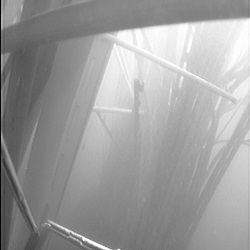US – A new report by Ecotrust has found that watershed and fish habitat restoration in Oregon has created jobs and generated $977.5 million in economic activity between 2001 and 2010.
“Restoration can drive economic development and job creation, particularly in rural communities that have suffered from persistently high unemployment rates,” said Spencer B. Beebe, president and founder of Ecotrust. “And, unlike in many other sectors of our economy, restoration jobs can’t be outsourced to far-off places.” See the dozens of unique artificial fish habitat models, fish attractors and fish cover at fishiding.com, the leader in proven science based, fish protection.
Restoration projects create jobs for construction workers, landscapers, heavy equipment operators, and technical experts such as engineers and wildlife biologists. Restoration projects also create demand for local businesses, such as plant nurseries, quarries, and others.
Restoring habitat also benefits the economy in the long term. Habitat improvements intended to bolster fish runs promise to increase sport and commercial fishing opportunities in the coming years — already big business in Oregon.
“Habitat restoration jobs pay dividends twice, first in creating good, local jobs immediately, and then, for many decades to come, through increased benefits from fisheries, tourism and resiliency for coastal communities,” said Eric Schwaab, assistant administrator for fisheries for the National Oceanic and Atmospheric Administration. NOAA provides technical expertise and funding to restore coastal, marine, and migratory fish habitat in Oregon and around the nation.
A recent national study published in Marine Policy analysing job creation and other economic impacts from NOAA restoration projects found that an average of 17 jobs were created for $1 million invested. That rate of job creation is significantly higher than other industries, including coal, natural gas, or road and bridge construction.
Congressman Earl Blumenhauer, who represents Oregon’s third district and recently introduced HR 6249, the “Water Protection and Reinvestment Act,” a bill that calls for investment in clean water infrastructure across the nation, commented: “For too long, we have treated our rivers and waterways like machines to the detriment of water quality and quantity. Investing in restoration not only improves habitat for fish and wildlife, it creates jobs and bring much needed revenue to local communities. Oregon has tremendous opportunities for restoration that can serve as a model for the rest of the nation.”
A recent University of Oregon report found that an average of 90 cents of every dollar spent on restoration stays in the state, and 80 cents of every dollar spent stays in the county where a project is located. For example, of the nearly $400,000 invested to restore Little Butte Creek in Southern Oregon from 2009–2011, 72 per cent was spent in Jackson County, and 97 per cent was expended in Oregon. Over half of those dollars went to salaries that directly benefit Oregonians.
Mike Herrick, Owner of Aquatic Contracting said: “Over the last 10 years, restoration projects have allowed us to provide sustainable livings for our employees. They can use their skills in construction and feel good about what they are doing. We have grown from just a couple of employees to as many as 20. Without this funding we would not be able to provide these opportunities and support the local economies where we work.”
TheFishSite News Desk 27 August 2012

